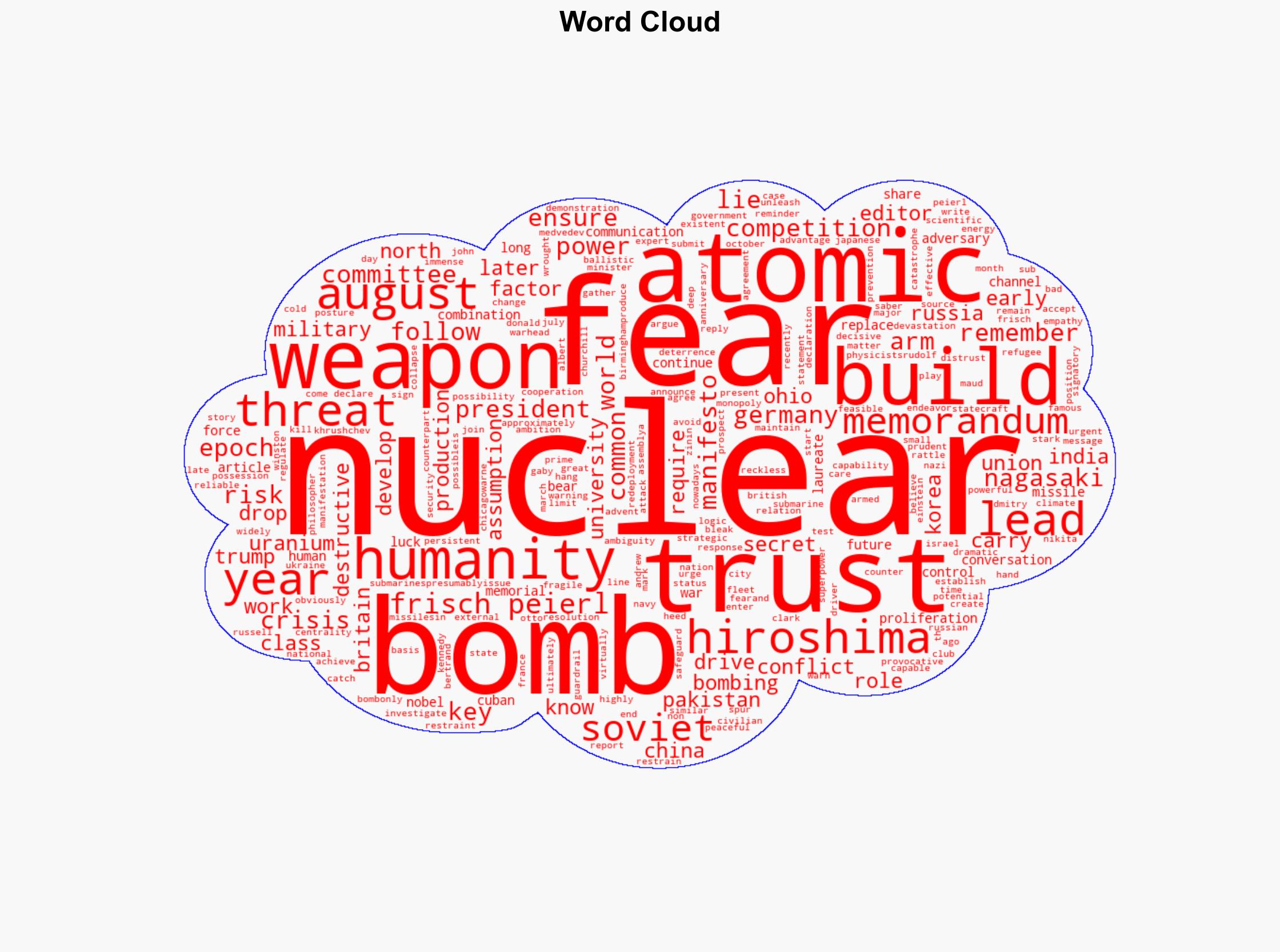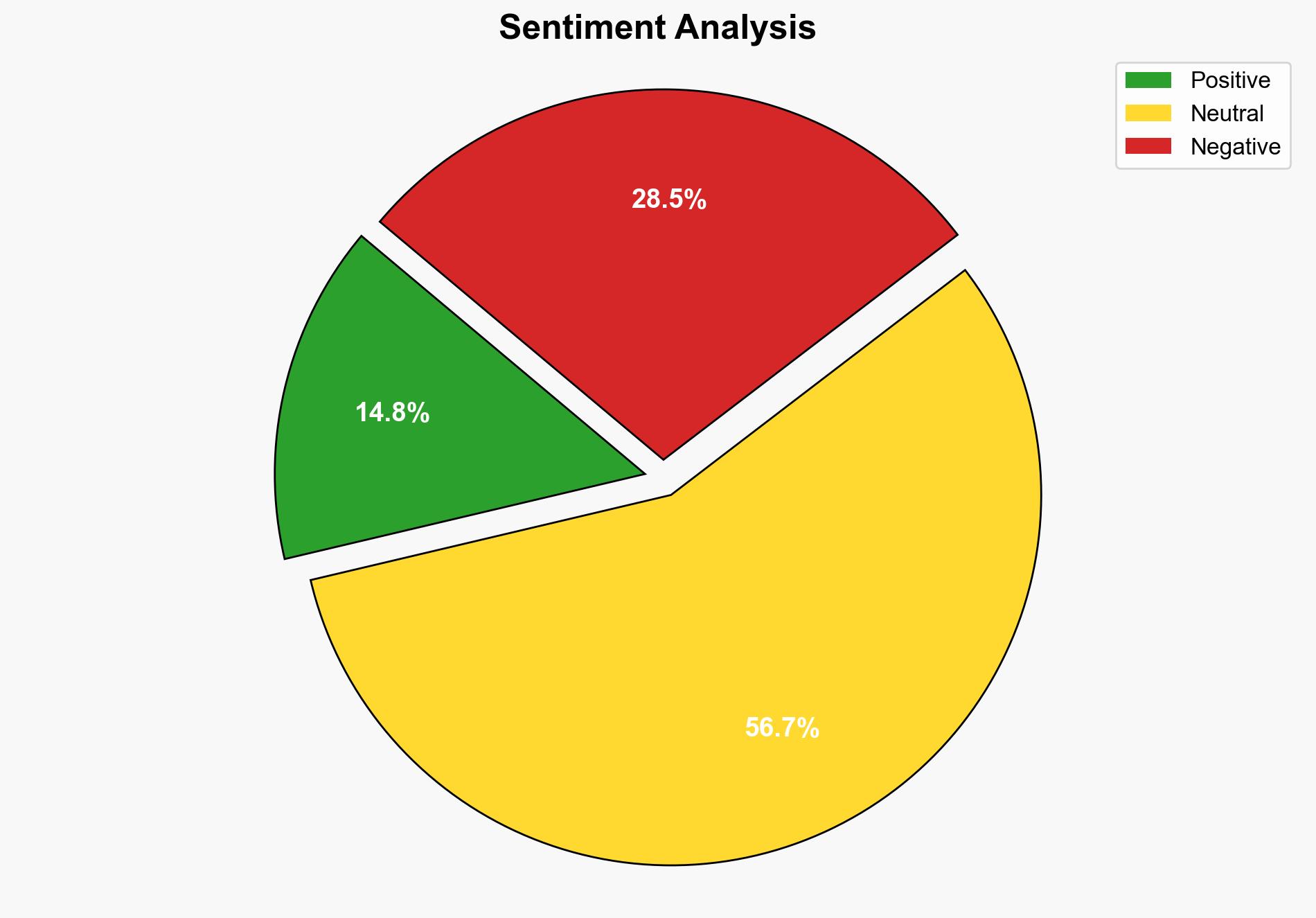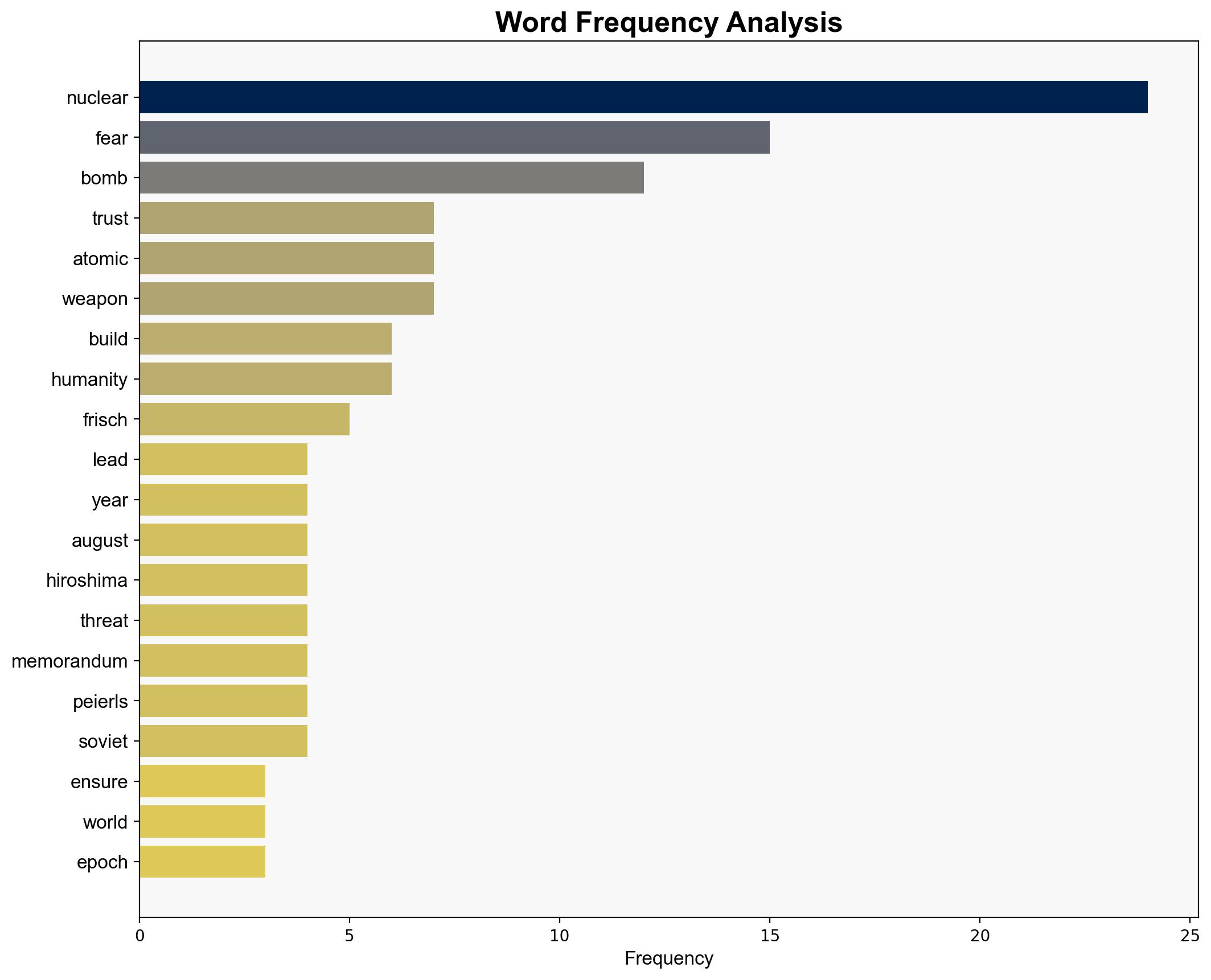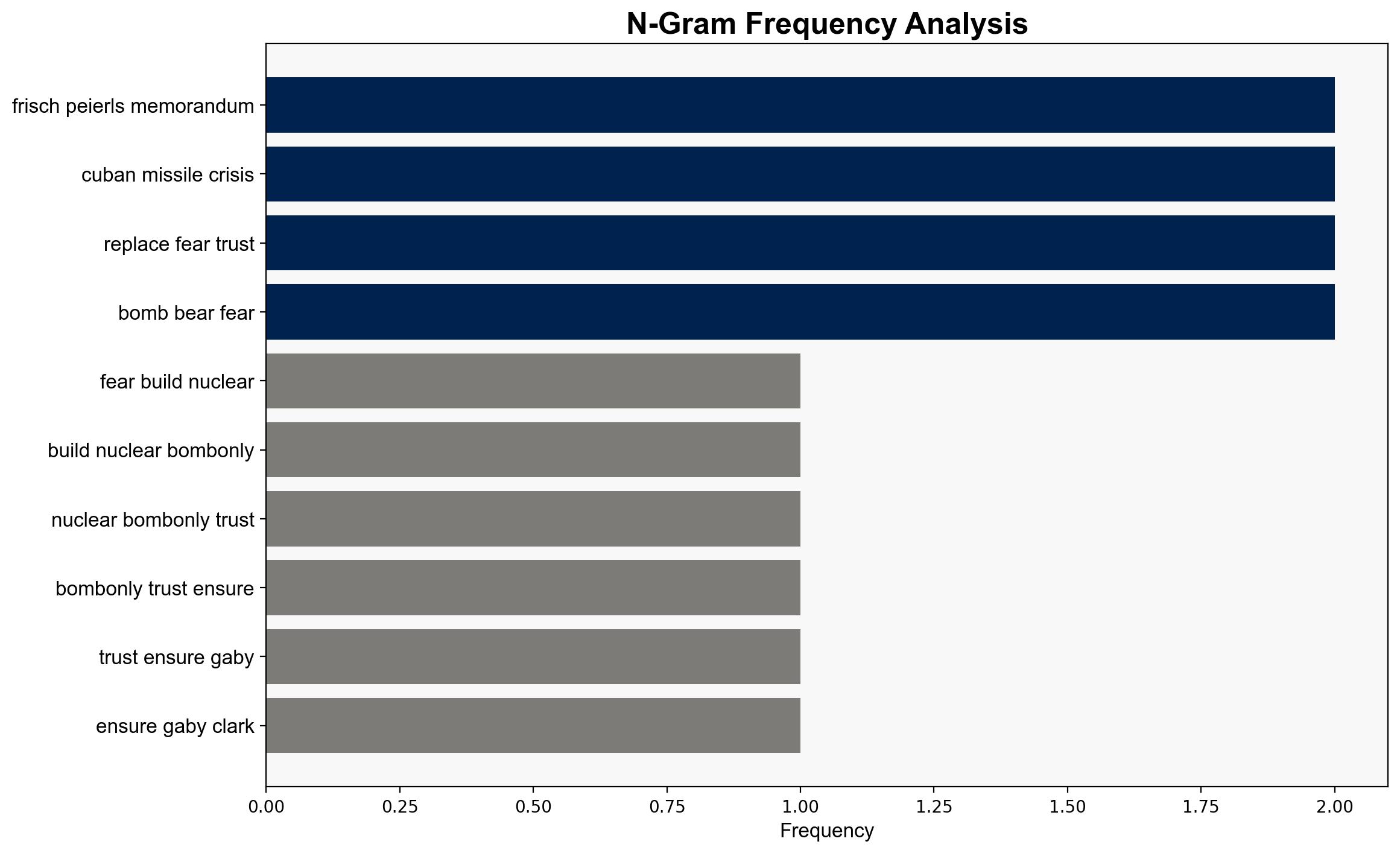Fear built the nuclear bombonly trust can ensure it is never used again – Phys.Org
Published on: 2025-08-06
Intelligence Report: Fear built the nuclear bombonly trust can ensure it is never used again – Phys.Org
1. BLUF (Bottom Line Up Front)
The most supported hypothesis is that fear has historically driven nuclear proliferation, but trust and diplomatic engagement are essential to prevent future use. Confidence level: Moderate. Recommended action: Strengthen international arms control agreements and enhance diplomatic channels to build trust among nuclear-armed states.
2. Competing Hypotheses
1. **Hypothesis 1**: Fear of adversaries’ nuclear capabilities primarily drives nuclear proliferation, with trust being a secondary factor in prevention.
– **Supporting Evidence**: Historical context of the Cold War, Cuban Missile Crisis, and current tensions involving Russia and North Korea highlight fear as a primary motivator.
2. **Hypothesis 2**: Trust and diplomatic engagement are crucial in preventing the use of nuclear weapons, overshadowing fear as a deterrent.
– **Supporting Evidence**: Successful resolution of the Cuban Missile Crisis through diplomacy and the role of arms control agreements in reducing tensions.
Using ACH 2.0, Hypothesis 1 is better supported due to the consistent historical pattern of fear driving proliferation, though Hypothesis 2 remains significant for prevention strategies.
3. Key Assumptions and Red Flags
– **Assumptions**:
– Nuclear-armed states act rationally under fear.
– Trust can be built through diplomatic channels despite historical hostilities.
– **Red Flags**:
– Potential over-reliance on historical analogies without considering changes in geopolitical dynamics.
– Assumption that all nuclear states value international norms equally.
4. Implications and Strategic Risks
– **Patterns**: Historical reliance on fear as a motivator for nuclear armament.
– **Cascading Threats**: Breakdown of existing arms control agreements could lead to renewed arms races.
– **Potential Escalation**: Miscommunication or miscalculation in high-tension areas (e.g., South Asia, Eastern Europe) could escalate into nuclear conflict.
– **Geopolitical Dimensions**: Shifts in power dynamics, such as China’s rise, could alter traditional deterrence models.
5. Recommendations and Outlook
- **Mitigation**: Reinforce existing arms control frameworks and negotiate new treaties focusing on transparency and verification.
- **Opportunities**: Leverage diplomatic engagements to build trust, particularly in regions with high nuclear tension.
- **Scenario Projections**:
– **Best Case**: Strengthened international agreements lead to reduced nuclear arsenals and increased global stability.
– **Worst Case**: Collapse of diplomatic efforts results in a new arms race and heightened risk of nuclear conflict.
– **Most Likely**: Incremental progress in trust-building with sporadic setbacks due to geopolitical tensions.
6. Key Individuals and Entities
– Donald Trump
– Dmitry Medvedev
– John F. Kennedy
– Nikita Khrushchev
– Rudolf Peierls
– Otto Frisch
7. Thematic Tags
national security threats, nuclear proliferation, arms control, diplomatic engagement





